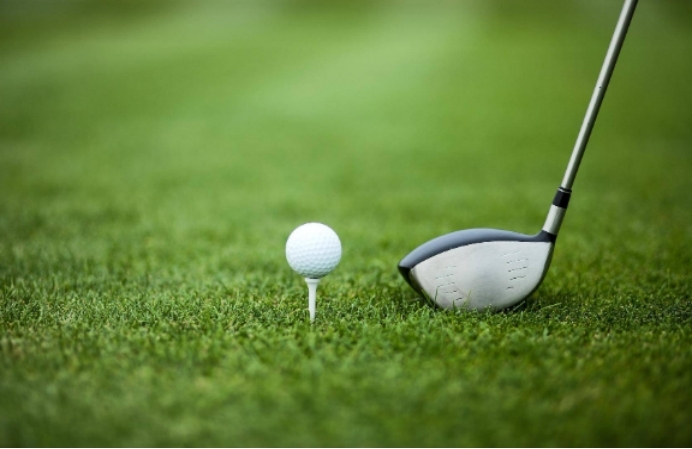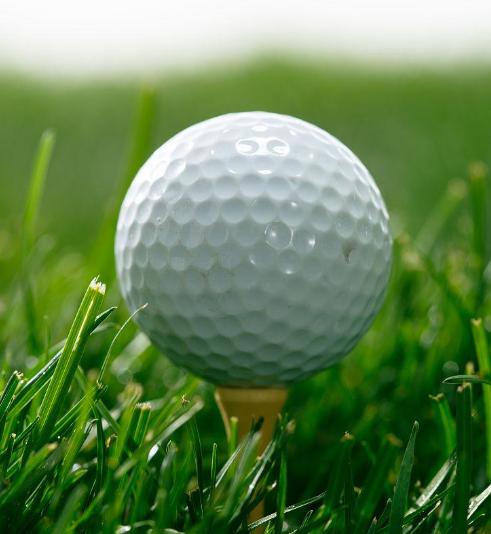The Science Behind Golf Ball Dimples: Why Do Golf Balls Have Dimples?
Introduction
If you’ve ever looked closely at a golf ball, you’ve probably noticed its surface is covered in hundreds of tiny dimples. These dimples aren’t just for aesthetics—they play a crucial role in how the ball performs in flight. In fact, without dimples, a golf ball would travel only about half as far as a dimpled one!
But how do these small indentations affect aerodynamics, distance, and control? In this blog post, we’ll dive deep into the science behind golf ball dimples, their history, and how modern manufacturers optimize them for peak performance.

In this blog post, we’ll dive deep into:
✔ The aerodynamics of dimples – How they reduce drag and increase lift
✔ The history of dimpled golf balls – From accidental discovery to advanced engineering
✔ The science behind dimple design – Shape, depth, and pattern variations
✔ Real-world performance impact – How dimples affect distance and control
✔ Fun facts and myths – Debunking common misconceptions
By the end, you’ll never look at a golf ball the same way again!
- The Aerodynamics of Golf Ball Dimples
How Dimples Reduce Drag
When a golf ball is struck, it flies through the air, encountering two main types of drag:
1.Skin Friction Drag – Caused by air molecules rubbing against the ball’s surface.
2.Pressure Drag (Form Drag)– Created by the difference in air pressure between the front and back of the ball.
A smooth golf ball would create a large, turbulent wake behind it, increasing pressure drag and slowing it down. Dimples disrupt this airflow, allowing the air to cling to the ball’s surface longer (a phenomenon called “boundary layer separation delay”). This reduces the size of the low-pressure wake, minimizing drag and allowing the ball to fly farther.
How Dimples Generate Lift
Dimples also help generate lift, similar to how an airplane wing works. As the ball spins (due to backspin from the clubface), the dimples create turbulence that interacts with the air. This produces:
– Higher airspeed on top of the ball(lower pressure).
– Lower airspeed underneath the ball (higher pressure).
The pressure difference results in lift, keeping the ball airborne longer and maximizing carry distance.

- The Impact of Dimples on Distance & Performance
Smooth vs. Dimpled Golf Balls: A Huge Difference
– A smooth golf ball might travel only 130-150 yards with a driver.
– A dimpled golf ball can fly 250-300+ yards under the same conditions.
This massive difference is why all modern golf balls have dimples—they are essential for distance and stability.
How Many Dimples Does a Golf Ball Have?
Most golf balls have between 300 and 500 dimples, but the exact number varies by brand and model.
Dimple Shape & Depth Matter Too
– Shallow dimples → Lower trajectory, more roll.
– Deep dimples → Higher flight, more carry.
– Hexagonal/other shapes → Some brands (like Callaway) use non-circular dimples for optimized aerodynamics.

- The Evolution of Golf Ball Dimples
Early Golf Balls: From Smooth to Hand-Hammered
– Featherie (Pre-1800s): Leather stuffed with feathers—smooth surface, short distance.
– Gutty (1848): Made from rubber-like sap, players noticed nicks and scratches improved flight.
– Hand-Hammered Balls (Late 1800s)**: Manufacturers intentionally added dimples by hand.
Modern Dimple Technology
Today, golf ball dimples are computer-designed and wind-tunnel tested for maximum efficiency. Brands experiment with:
– Multi-layer dimple patterns (e.g., TaylorMade’s “Speed Dimple” tech).
– Variable depth dimples for better wind resistance.
– Micro-dimples on some premium balls for reduced drag.
- Other Factors Affecting Dimple Performance
Spin & Control
– More dimples → More spin (useful for short-game control).
– Fewer dimples → Less spin (better for distance off the tee).
Weather Conditions
– Windy conditions: Deeper dimples help stabilize flight.
– Rain: Dimples help shed water, preventing excess drag.
- Fun Facts & Myths About Golf Ball Dimples
✅ Fact: The first patent for dimpled golf balls was filed in 1905.
✅ Fact: In 1977, the “Polara” ball had asymmetrical dimples to reduce slices—but it was banned by the USGA.
❌ Myth: More dimples always mean more distance (optimization matters more than sheer quantity).
Conclusion: Why Dimples Are a Game-Changer
Golf ball dimples are a perfect example of how physics and engineering enhance sports performance. Without them, golf would be a completely different game—drives would be shorter, approach shots less precise, and overall play far less dynamic.
Next time you tee up, take a closer look at your golf ball’s dimples—they’re the secret behind every long drive and soaring iron shot!
